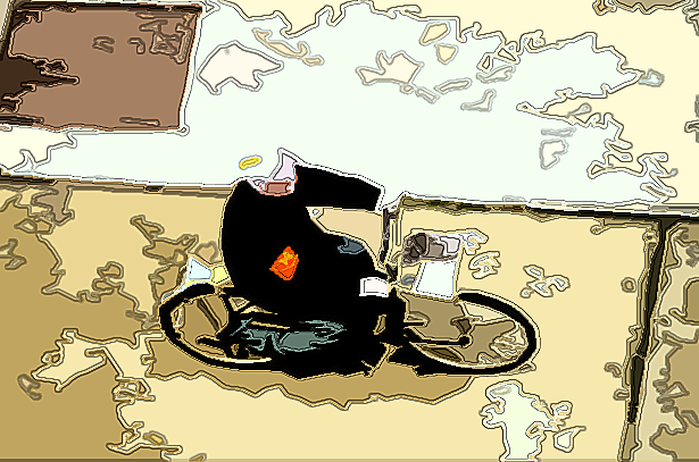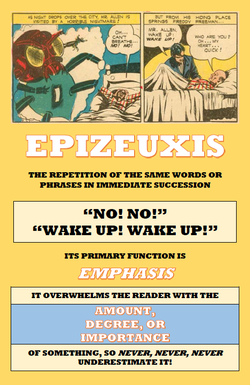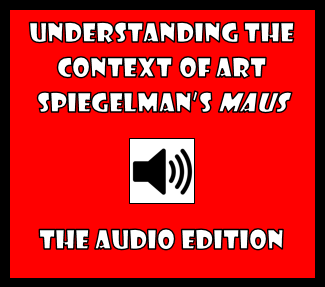|
by Glen Downey, Comics in Education, www.comicsineducation.com Filmic language can be useful in terms of understanding and expressing the relative distance between the reader/viewer and a given subject in a graphic story (see Filmic Language, Part 1). However, it can also help us understand our angle of view with regards to the subject, which in itself can have an impact on how we perceive what we are seeing. Bird's-Eye ViewA bird's-eye view in a comic allows us to view the contents of a panel from overhead, helping us to do one of a number of different things, including seeing the context of a scene with greater clarity or giving us a clear sense of a character's predicament. When a graphic storyteller shows us a character from a bird's-eye view, they can seem smaller, weaker, or more insignificant than when shown from a different angle. They can look physically smaller and less imposing, and therefore more vulnerable. Bug's-Eye ViewIn this type of shot in a graphic story, the camera looks up at the subject from below. This can make the subject itself seem much larger, more imposing, or even more physically intimidating, especially as the bug's-eye shot moves closer to the actual subject and the angle gets closer to 90 degrees. Over-the-Shoulder ShotIn this shot, a character is typically shown in the immediate foreground of the panel with another character further away. The action of the panel is sometimes literally framed bythe head and shoulders of the character in the foreground, thus giving the shot its name. It is a commonly used shot in the exchange of dialogue since it gives the reader an opportunity to perceive the character (or object, scene, etc.) in the distance from the general point of view of the character in the foreground. POV ShotFor the POV shot, the viewer takes a small step forward from the over-the-shoulder shot to become, in effect, the character in the foreground. Comics and films from the horror genre use this shot frequently since it can develop great anxiety and anticipation in the reader/viewer. It can allow him or her to walk in the shoes of a killer or potential victim, seeing only what this character sees. Its use, however, is not limited to the horror genre, and a POV shot has wide applications in visual narrative. Shot / Reverse ShotThis is a common technique in graphic storytelling that has been inherited from classic Hollywood films that sought to de-emphasize transitions from one scene to the next . Often, a shot / reverse shot in a panel sequence involves a medium over-the-shouldershot of two characters in conversation followed by a panel in which the characters' positions are reversed. This allows for a fairly seamless conversation.
0 Comments
Your comment will be posted after it is approved.
Leave a Reply. |
Glen DowneyDr. Glen Downey is an award-winning children's author, educator, and academic from Oakville, Ontario. He works as a children's writer for Rubicon Publishing, a reviewer for PW Comics World, an editor for the Sequart Organization, and serves as the Chair of English and Drama at The York School in Toronto. If you've found this site useful and would like to donate to Comics in Education, we'd really appreciate the support!
Archives
February 2019
|




 RSS Feed
RSS Feed
